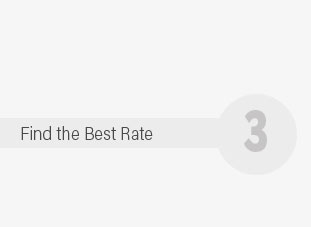 |
 |
 |
|---|
 |
 |
 |
 |
|---|
 |
 |
 |
 |
 |
 |
|---|

Understanding Car Insurance Costs: A Comprehensive GuideCar insurance is a crucial aspect of vehicle ownership, a topic that both fascinates and perplexes many drivers. At its core, the cost of car insurance is a reflection of risk assessment, where insurance companies meticulously evaluate various factors to determine premiums. Let's delve into the intricacies of how these costs are calculated and what influences them. Firstly, demographics play a significant role. Age, gender, and marital status are among the initial criteria. Statistically, younger drivers, particularly teenagers, tend to face higher premiums due to a perceived lack of experience and higher accident rates. Similarly, gender can influence costs, with some studies suggesting that males may face higher premiums due to riskier driving patterns. However, it's important to note that this can vary by region and insurer. Location is another critical factor. Urban areas, with their higher traffic densities and increased likelihood of accidents or theft, often result in higher insurance costs compared to rural settings. Insurers analyze local crime rates, road conditions, and even weather patterns to estimate risk. For instance, areas prone to flooding or harsh winters might see elevated premiums due to the increased likelihood of weather-related claims. Moreover, the type of vehicle one drives significantly impacts insurance rates. Luxury cars, sports models, and vehicles with high repair costs or theft rates generally incur higher premiums. Insurers assess the vehicle's safety features, engine size, and even the cost of replacement parts to calculate the risk associated with insuring it. A car equipped with advanced safety features, such as anti-lock brakes or collision warning systems, might qualify for discounts, reflecting the lower risk of severe accidents.
Insurance companies also take into account annual mileage. The rationale is simple: the more you drive, the higher the chance of an accident. Therefore, individuals with longer commutes might face steeper premiums compared to those who use their vehicle sparingly. In a subtle twist, loyalty and bundling can offer financial reprieve. Many insurers provide discounts for long-term customers or for bundling multiple policies, such as home and auto insurance, with the same company. This strategy not only rewards customer loyalty but also simplifies management of multiple policies for the consumer. Finally, one cannot ignore the element of competition in the insurance industry. Rates can vary significantly between companies, making it imperative for consumers to shop around. Comparing quotes, understanding policy terms, and periodically reviewing one's insurance needs are prudent steps to ensure that one is not overpaying. In conclusion, while car insurance costs might seem arbitrary at first glance, they are the result of a complex interplay of multiple factors, each meticulously analyzed by insurers. By understanding these dynamics, drivers can make informed decisions, potentially reducing their premiums while maintaining adequate coverage. Staying informed and proactive not only helps in securing better rates but also ensures peace of mind on the road. https://www.iii.org/article/what-determines-price-my-auto-insurance-policy
The car you drive The cost of your car is a major factor in the cost to insure it. Other variables include the likelihood of theft, the cost of repairs, its ... https://www.nationwide.com/lc/resources/auto-insurance/articles/how-much-is-car-insurance
According to the American Auto Association (AAA), the average cost to insure a mid-size sedan in 2020 was $1245 a year, or approximately $104 per month. https://www.mass.gov/info-details/it-pays-to-shop-around-consumer-faq
Massachusetts has some of the highest auto insurance costs in the country. Many factors contribute to ...
|
|---|